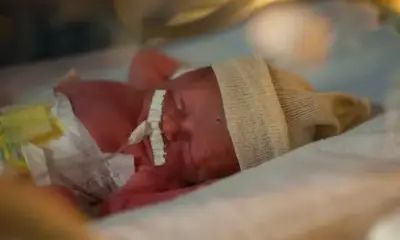Bathing & Diapering
How to Identify and Treat Yeast Diaper Rash

How to Identify and Treat Yeast Diaper Rash
Yeast diaper rash treatment requires prompt attention to prevent discomfort for your baby. This rash often results from an overgrowth of yeast called Candida. Unlike typical diaper rashes caused by wetness or chafing, yeast infections need specific care. If your baby’s rash doesn’t improve with usual creams, yeast might be the culprit. Early recognition and treatment help speed healing and keep your baby comfortable.
What Causes Yeast Diaper Rash?
A yeast diaper rash happens when Candida grows uncontrollably in warm, moist areas. Every baby has harmless amounts of this fungus on their skin. However, a dirty diaper creates a perfect environment for yeast to multiply rapidly. Antibiotics can also increase the risk by killing good bacteria that keep yeast balanced. Babies with recent oral thrush may also develop yeast diaper rash since yeast passes through their digestive system and appears in their poop.
Symptoms to Watch For
Yeast diaper rash shows clear signs different from regular diaper rash. Watch for these symptoms:
- Bright red or reddish rash that lasts more than two days
- Well-defined edges with slightly raised borders
- Rash that spreads into skin folds around the groin
- Small red “satellite” spots near the main rash
- Scaly or flaky skin on the affected area
If your baby has these symptoms, consult their healthcare provider for proper diagnosis and treatment.
Yeast Diaper Rash Treatment: What You Need to Know
For effective yeast diaper rash treatment, regular diaper creams usually won’t work. Your baby’s doctor may prescribe antifungal creams such as nystatin, clotrimazole, or miconazole. Sometimes, mild corticosteroid creams help reduce inflammation alongside antifungals. Applying the cream two to three times daily is enough, but you must rub it gently into the skin for better absorption.
Moreover, doctors often recommend applying a barrier cream on top to protect the skin from moisture. Avoid powders like talcum or cornstarch as they might irritate the rash or cause breathing issues if inhaled.
If the rash does not improve within three days, inform your doctor. Also, seek medical help if the rash develops sores, oozing patches, or your baby develops a fever. These signs may indicate a bacterial infection needing antibiotics.
How to Keep Your Baby’s Bottom Clean and Dry
Proper hygiene supports yeast diaper rash treatment and prevents worsening. Follow these steps:
- Change diapers frequently to keep skin dry
- Allow diaper-free time for fresh air to reach the skin
- Clean the affected area gently with water and a soft cloth
- Avoid using wipes on irritated skin to prevent extra irritation
- Use a mild, fragrance-free soap when necessary
- Pat the skin dry or let it air dry before applying creams
These actions reduce moisture and create a less favorable environment for yeast growth.
Preventing Yeast Diaper Rash
While not all yeast infections are preventable, especially if your baby uses antibiotics, you can reduce the risk by maintaining a dry, clean diaper area. Here are helpful prevention tips:
- Check and change wet or dirty diapers immediately
- Clean thoroughly after bowel movements and allow skin to dry
- Avoid tight diapers to ensure air circulation around the skin
- Give your baby extra diaper-free time regularly
These simple steps discourage yeast from thriving and help keep your baby comfortable.
Are Cloth Diapers Better for Yeast Diaper Rash?
No strong evidence suggests cloth diapers prevent yeast diaper rash better than disposables. Changing diapers promptly matters most. If you use cloth diapers:
- Wash them with mild detergent and bleach regularly
- Rinse thoroughly to remove detergent residue
- Avoid fabric softeners or dryer sheets, which can irritate skin
If your baby already has yeast diaper rash, consider using disposable diapers temporarily. They absorb moisture well and keep skin drier, helping the rash heal faster.
When to See a Doctor
If your baby’s yeast diaper rash does not improve after a few days of treatment, consult a healthcare provider. Also, seek medical attention if the rash worsens or your baby develops fever or unusual symptoms. Early intervention prevents complications and ensures your baby recovers quickly.
Explore More
For more health news and baby care tips, explore our website regularly. Stay informed to keep your little one happy and healthy!










